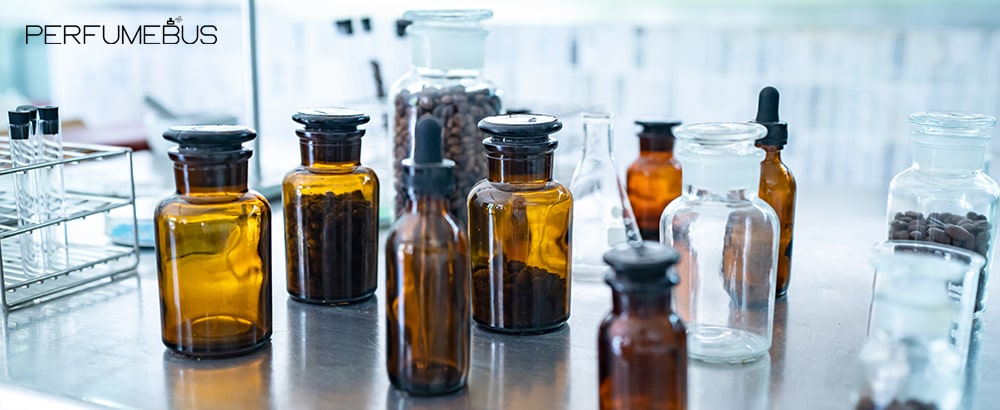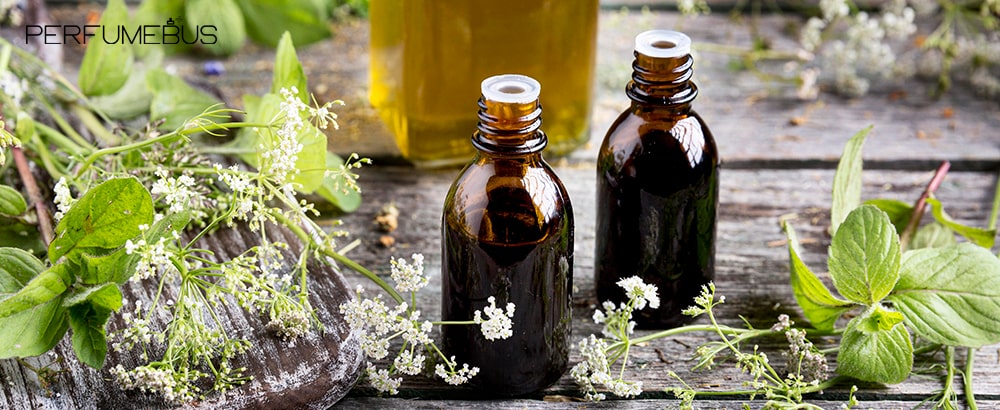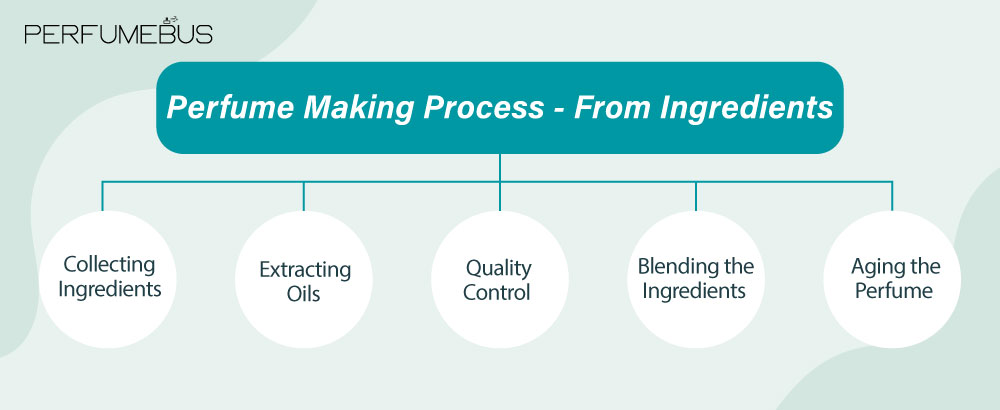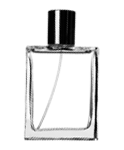Basket Subtotal ( 0 Item ) :
$0.00Table of Contents
How Is Perfume Made - A Detailed Guide to Perfume Manufacturing
Perfume is not just a scent; it is a timeless art that has been a part of cultures from the bygone era. It has taken mankind years from the ancient ritualistic form of making scents to the sleek and classy fragrances of modern times.
Are you curious about how those elegant smells that come from little perfume bottles combine to form a single scent? In this guide, you’re going to learn how perfume is made, from the nucleus to the end product, so that you can understand better just how they are made.
How is Perfume Made?
Perfume is made using a particular technique of distilling and combining scented materials to produce a specific odour. The main components of perfume are fragrances which are either natural oils extracted from flowers, fruits, spices or wood and synthetic chemicals having similar smells to the natural compounds.
The extraction methods include distillation, cold pressing as well as solvent extraction. After all these essential oils are gathered, they are blended with a solvent, which may comprise alcohol and water to thin down the scent and stabilize it.
Some of the perfumes have to go through maturation where the different ingredients are allowed to interact and change making the final scent better.
The end product is a fragrance blend that retains every characteristic of its raw materials and is ready to be formulated into any scent of perfume.
Fragrance Material Info - Essential Elements in Perfume Making

The first important component of any perfume is the substance which is used to create it, this may be extracted independently from nature or specifically made in laboratories. Some of these ingredients are chosen due to their ability to produce fragrance while others are mixed in a specific proportion to deliver a specific fragrance.
Floral products like flowers, fruits, spices, wood and other animal-related products have been used for many years because of their pleasant and unique fragrances. Nevertheless, many of these natural smells and fragrances are rare or hard to extract in large quantities and this is where synthetic chemicals come to do their magic.
By synthesizing the scent of some hard-to-come-by ingredients, the industry makes these scents available and affordable and at the same time allows the perfumers to create new scents in the market.
Key Materials Used in Perfume Making Include:

Essential oils: These oils are derived from the extracts of different plants and are the actual base of most scents. Some of the best-known types include rose, jasmine, lavender, and sandalwood.
Essential oils are typically extracted through a process like steam distillation or cold pressing, and they contain the whole, unalloyed chemical content of the plant.
These are light and stimulating essences from fruits such as lemons, oranges, limes and bergamot. Citrus oils are generally stimulating and revitalizing and can be used in the top note; they create an impression of freshness as soon as the fragrance is applied.
- Resins: Frankincense is obtained from tree sap and has been used in perfumes for centuries because of its balsamic and slightly spicy scent, similar to myrrh. These resins are unique in that the production process for creating scent involves a deeper level of depth.
- Animal-derived substances: Traditionally some of the perfumes used animal-derived materials such as musk, ambergris and civet. But today, the trend of using these scents has slightly changed and shifted towards the synthetic versions in the making of vegan perfumes. While traditional antioxidants contain natural aromas with many moral issues linked to their assets, such synthetic imitations give the same deep, musky fragrances.
- Alcohol: Alcohol is an important component in the preparation of the perfume because it serves as a diluting agent. That is because it assists in the dissolution of the aromatic compounds for ease of application and flexible wear, as well as the evaporation of the emitted scent once the perfume has been sprayed or dotted on the skin of the wearer. The most frequently used alcohol is ethanol; however, different types of alcohol can be used for specific fragrances.
- Synthetic compounds: Most contemporary perfumers use synthetic substances for emulation or substitution of specific elusive and exotic notes and also for the establishment of novel fragrances. These compounds are vital for putting into perfumes assertive, original, or even futuristic accents, like leather, ozone, or sugary-sweet ones.
All these components used for perfume making play their part in adding another level of complication, richness and mystery to the final perfume. These are blended by a proficient perfumer known as the “nose” with these ingredients in the right composition to obtain an actual perfect scent.
Said that the artistry of perfume is not just in choosing the proper substances, but also in knowing how they will perform during time but in a special order one on the other after applying on the skin.
The outcome is an effectively engaging and unique one where every single component contributes towards the personality of the perfume.
Perfume Making Process - From Ingredients to Fragrance

Perfume Manufacturing is an art that goes through different processes and still involves rigorous quality control to produce quality perfume. This process is highly technical and scientific, yet it involves aspects of creative art that result in the careful blending of pleasant scents that are scientifically proven to stimulate the senses.
The process of creating a fragrance involves a mix of art and science, and each stage contributes to the overall sensation of fragrance. Let’s explore the process step-by-step:
1. Collecting Ingredients
Flora and fragrance start with the corresponding choice of raw material which should be of high quality and have the peculiarities of the fragrance. These ingredients can be divided into two main categories:
- Plant-based ingredients: These include flowers, fruits, leaves and woods all of which are used to extract the aromatic oils from them. Such oils include lavender, rose and citrus fruit as well as sandalwood-extracted oil. The plant materials are selected during the right stage in plant development to ensure that they hold the simplest and most highly potent scents possible.
- Animal-based substances: Originally, perfume incorporated other types of oils such as ambergris which was obtained from sperm whales and musk obtained from deer bringing in base and body notes as well as depth. However, over the years, ethical considerations, as well as a decrease in the availability of animal-based sources, modern perfumery has shifted heavily to synthetic copies that imitate natural ingredients without the use of animal products.
These raw materials are carefully chosen based on the quality of their fragrance capability and the absolute purity of each one since they create the overall structure of the fragrance pyramid of the future perfume.
2. Extracting Oils
After the ingredients are gathered the next process is to distill the aromatic oils which will be used to give the perfume its characteristic smell. There are several methods of extraction, each suited to different types of materials:
- Solvent Extraction: This method is used for those flower and plant species that cannot endure the heat of the steam distillation process. Some of the plant materials are then put in rotating drums and subjected to solvent extraction using solvents such as petroleum ether or benzene. This does have the effect of dissolving the aromatic compounds from which a waxy residue remains. The wax is then subjected to an alcohol process to distill the essential oils from the wax.
- Steam Distillation: The most common for herbs, flowers, and woody substances where the plant material is placed in a still and steam is passed through. The heat is used to cause the extraction of the essential oils, which is then followed by condensation and collection of the oils. This method is most widely used for extracting fats and oils such as lavender and eucalyptus oils.
- Expression: This is mostly applied in citrus fruits, whereby the peels undergo manual or mechanical processes to extract the oils. For citrus fruits such as oranges, lemons and bergamot this process may be a bit lengthy but it is quite efficient.
- Enfleurage: An old method where the flowers are put on enamel glass vessels which have been coated with grease so that petals stick to it like tape. The grease on the cloth is proven capable of taking time to absorb the fragrance from the perfume. The greasy mixture that is obtained, is then washed with alcohol which decomposes and removes the smell leaving behind the oil.
- Maceration: Like enfleurage, in maceration, warm fats are used instead of grease to absorb the fragrance. The fat is later dissolved in alcohol to partition off the essential oils. It is used for flowers that die easily or for flowers that need a stronger smell.
Every extraction process is applied depending on the nature of the material used and the required fragrance end product.
3. Blending the Ingredients
After the extraction of the essential oils, the next process is the scientific blending of the various oils in a composition. This is where the skill of the perfumer comes into play. Finally, the perfumers employ certain ratios of mixing certain oils to produce the required perfume. A perfume is typically made up of three layers of scent, known as the fragrance notes:
- Top Notes: The top note is the first impression of the scent that you get when you apply the perfume. Such fragrances require airing and are mostly natural and light such as oranges, peppermint or chamomile among others. Top notes are evanescent and last from a couple of minutes to an hour only but they are the foundation of the perfume.
- Heart Notes: It is also called the middle of the heart notes of the perfume since they are released once the top notes evaporate. These notes are more harmonized and are usually floral or spicy in their nature, for instance, they may include rose, jasmine, and cinnamon. The first fragrance notes are the primary scent that is identifiable for several hours.
- Base Notes: These are the bases of the perfume, which enrich the scent and make it long-lasting. Some of the base notes are strongly accented, long-lasting and deep and may consist of musk, amber, sandalwood and vanilla. These notes can last for hours or even days, although it may only be the top and heart notes that people can detect after the background has worn off.
The combination of these three notes is harmonious and intricate and presents an experience where the scent changes over time.
4. Aging the Perfume
One of the key processes in the creation of perfume is ageing, which enables the various notes to blend and become better balanced. Much as the wine, the process of aging enriches the scent making it more layered like a fine wine. This process may last for several weeks, months or even years in the case of some kinds of perfume.
At this stage, it is kept in a dark and cool place to enable the oils to age and tone down. This is made possible by ageing, which allows the various notes of the perfume tone to harmonize and produce a well-balanced as well as sophisticated last product.
5. Quality Control
Any perfume before it gets to the market has to go through a strict quality check process that is very vital. This way, each bottle produced is of high quality, safe for use and meets the performance of the brand and the company. The quality control process includes several important checks:
- Consistency: The fragrance can only be manufactured according to the configuration of the initial composition. This means making tests with different batches to make sure that the scent will still be consistent throughout the batches.
- Safety: The fragrance cannot contain any dangerous elements, it must conform to guidelines given by global organizations. This also includes the test for allergens and toxic elements as well as its compliance with certain safety standards.
- Regulatory Standards: The laws on ingredients of perfumes vary from country to country and that gives it a distinct smell. To safeguard the public and the company's reputation, quality assurance guarantees that the perfume meets these quality standards.
Different Types of Perfume
Fragrances are mainly classified according to the percentage of aromatic compounds the concentration of which determines the strength and durability of the scent. Here are the primary types of perfume:
- Parfum: It is the strongest strength of the product and has the longest duration with the biggest percentage of aromatic oils. As such, its scent lasts longer, it can last up to 24 hours or even more. Parfum is rich and it is usually costly because of its concentration levels.
- Eau de Parfum: Eau de Parfum, while not as intense as parfum, is much stronger than other fragrances and will last from several hours to days. It is somewhere in the middle in terms of the product’s durability and strength, thus considered by most lovers of perfume as ideal.
- Eau de Toilette: Eau de Toilette is less concentrated than other fragrances and has less or no oil content because it’s lighter and refreshing. It is usually cheap and recommended for daily wear with a longevity of about 3-5 hours.
All these types provide different kinds of experience depending on the concentration and length of time that the scent is emitted. Check out this guide for all types of perfumes.
The Future of the Perfume Industry
These scents have over time been copied by chemical manufacturers, making perfumes cheaper and easily available in the modern world. However, the brands do not let the use of synthetic increases in their products and use real materials as much as they can.
Because odour is associated with emotion and memory, the need for new and better fragrances remains strong. Perfumery is still an art that combines chemistry, nature and interpersonal communication.
Bottom Line
Manufacturing of the perfume is not as simple as most people would assume. Although modern perfumery has changed, many procedures for extracting fragrances remain rather long. With the help of synthetic products, the process becomes faster, cheaper and easier and due to this perfume has become affordable to anyone.
They discover ways that it is so interesting that you can get an idea of what goes into making a perfume. The next time you go for a ride to test a new fragrance, think about the components of the product, how they were extracted, and how long it took to create that accurate scent of the perfume. If you take the time to appreciate the hard work that is put into creating it, you may well see perfume in a different light.










Leave us a comment